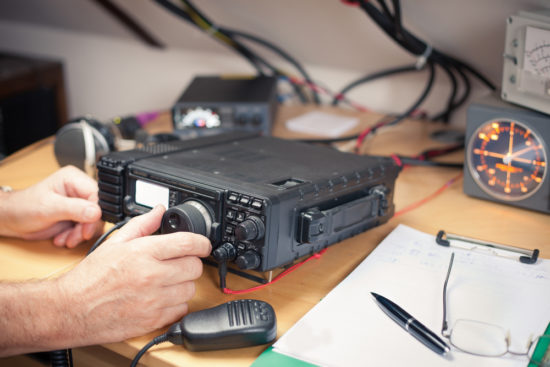What do VRRP1, FEMA ICS-4002, and IEEE 379-2014 have in common? They are all standards designed to mitigate some kind of emergency/failover situation. Technology plays a key role in our lives whether it means becoming more efficient at our jobs, allowing us to communicate with family members across the world, or simply using it for entertainment. Have you ever stopped to think of all that is involved in making this work? For instance, where does the electricity come from? How is it generated? How does it make it to my device? Without this single element, all the great software in the world on your expensive device would not work. This really comes into perspective once you have been in a disaster/emergency situation.
 Now, let’s consider the emergency situation occurs, then what? Do standards have a role to play? Naturally, the answer is a resounding yes! In the last century, as we have learned to depend more on technology, standards have been introduced to help us sustain the lifestyle we have become accustomed to. A classic story that shows the importance of standards during emergency responses is the great Baltimore Fire of 1904.4 The level of response to put out the fire was great by the adjoining cities (i.e., sending their firefighters and firefighting equipment). Unfortunately, there was one problem: none of the out of town equipment would work with Baltimore hydrants. From that experience, the first early national standards started to appear to make sure all hydrants had the same type of standard connection for hose couplings.
Now, let’s consider the emergency situation occurs, then what? Do standards have a role to play? Naturally, the answer is a resounding yes! In the last century, as we have learned to depend more on technology, standards have been introduced to help us sustain the lifestyle we have become accustomed to. A classic story that shows the importance of standards during emergency responses is the great Baltimore Fire of 1904.4 The level of response to put out the fire was great by the adjoining cities (i.e., sending their firefighters and firefighting equipment). Unfortunately, there was one problem: none of the out of town equipment would work with Baltimore hydrants. From that experience, the first early national standards started to appear to make sure all hydrants had the same type of standard connection for hose couplings.
The Baltimore fire is just an example of how the needs for standards have been born. When we speak of natural disaster preparedness, we are really narrowing ourselves to only a small segment of emergency responses. By forcing ourselves to think in the broader terms of business continuity, it allows you to grasp situations you would normally not consider that are very elemental and disruptive (e.g., a substation equipment failure; a burst water pipe; an electromagnetic pulse (EMP)). These are all man-made situations that take us down the same road of an emergency response. By forcing ourselves to think of these events and coming up with standards (technological or procedural) it will allow us to mitigate these occurrences. In other arenas, engineers have tried to foresee and prevent similar situations. For example, in the event of radio system aircraft failure, the procedure to land safely and communicate between tower and the pilots of the aircraft is through color-coded flashing lights that have been standardized to mean something specific across the world.
Having lived through Hurricane Katrina, or more recently Harvey, and experienced the emergency response to such large-scale natural disasters, it really put standards into perspective as to how vital their role is. In comparing both storms, Harvey’s response by government agencies and HAM radio operators has been very streamlined and coordinated. Much can be attributed to lessons learned from Katrina and the development of a “standard” approach to the response. Having a set of known standards as a basis ensured the timely, coordinated, and effortless response to properly setup functioning telecommunication systems. Communication systems were key to improving and savings lives.
It is uncanny to think of the similarities and parallels between living through an emergency situation and living in a third world country. For example, how do you provide disease diagnosis when no lab equipment is available? If you can develop a standard, portable lab that can aid in such a task, you just helped solve a very important riddle. For those researchers out there, instead of waiting for the disaster to happen, third world countries provide a perfect test bed. The added benefit is that you are improving human lives as well—a rarely thought of byproduct of creating and using standards.
 Standards also bridge the gap between technology and different sectors of society. A great example of standards fostering a sense of community is the Santa Clara County emergency response system in California: Civil Air Patrol (CAP) with their “eyes” from the air; the local HAM radios operators with their “ears” over the radios waves; and the county government agencies ensuring the safety of everyone. The underlying glue for this to happen are the standards that allow HAM operators to talk to each other; the semiconductor business that allowed the creation of components in the airplane and radio systems; and the “standard” steps in place between government agencies and society groups to respond to situations (e.g., earthquakes). Another example of technological standards helping others in time of need is NetHope5 –telecommunication professionals come together to put the standards (e.g., IEEE 802) they know and love to good use.
Standards also bridge the gap between technology and different sectors of society. A great example of standards fostering a sense of community is the Santa Clara County emergency response system in California: Civil Air Patrol (CAP) with their “eyes” from the air; the local HAM radios operators with their “ears” over the radios waves; and the county government agencies ensuring the safety of everyone. The underlying glue for this to happen are the standards that allow HAM operators to talk to each other; the semiconductor business that allowed the creation of components in the airplane and radio systems; and the “standard” steps in place between government agencies and society groups to respond to situations (e.g., earthquakes). Another example of technological standards helping others in time of need is NetHope5 –telecommunication professionals come together to put the standards (e.g., IEEE 802) they know and love to good use.
As we have briefly reviewed, standards show up in all shapes and sizes. Whether it is on the technology front in the way we make things, or the procedures we follow to communicate and coordinate tasks between humans, they play a key role to ensuring our survival in mitigating the gravity of a situation. Students, researchers, and hobbyists, next time you are working on a project, remember to include standards in your ventures. They will help make your project more robust and meaningful. If a standard is not available in your line of work, help drive and create one. Who knows, your standard may help save a life one day. And remember, standards are key in ensuring human survival.

Seeking to serve the community, Jeffry Handal became a volunteer of the Institute of Electrical and Electronic Engineers (IEEE) in 2006. In his inception, he became the Student Liaison between the IEEE Student Branch and IEEE Professional Section and the PACE (Professional Activities Committee for Engineers) Coordinator, as part of IEEE-USA, for the Baton Rouge area. In 2007, he accepted the prestigious role of GOLD (Graduates of the Last Decade) Coordinator for the IEEE Region 5 and the GOLD International Committee Liaison. For 2010, he worked closely with children K through 12 as part of the Precollege Education Committee hoping to influence future minds. Additionally, took the challenging role of Region 5’s representative to the Employment and Career Services Committee. Here, he worked with both unemployed and employed IEEE members to help them further their careers by designing IEEE member services. In 2012, Jeffry discovered there was a whole different side of IEEE that offered different levels of technical and non-technical engagement. It lead him to propose the creation of a new experimental role for Region 5 called the Standards Coordinator. It is designed to bridge the gap between the MGA and EAB side of IEEE and the Standards Association. For his hard work, in 2013, the EAB and SA recognized his efforts and invited Jeffry to become an official member of the Standards Education Committee. In said role, he is enthusiastically working to promote engagement in standards at different levels of IEEE.
